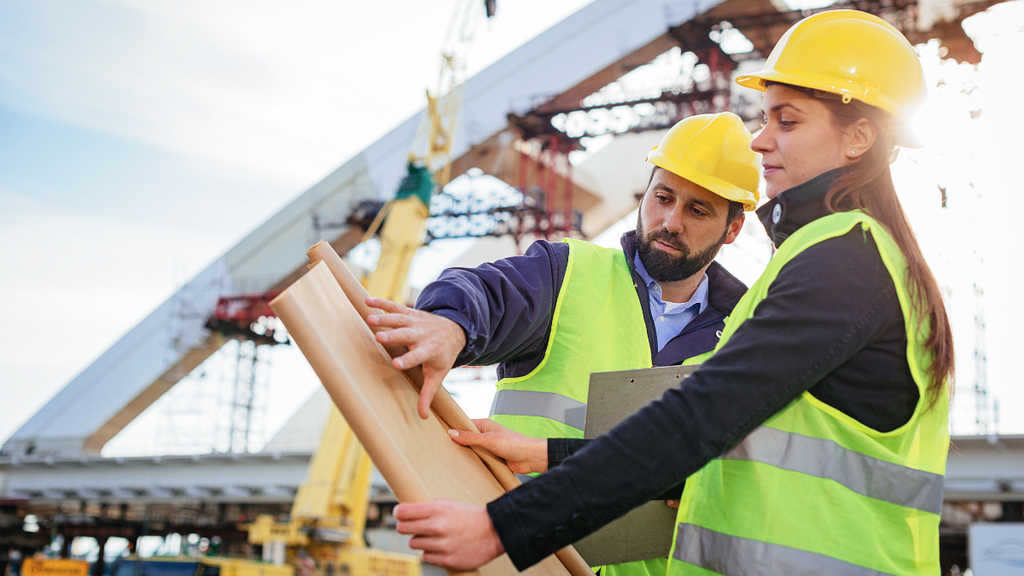Not known Details About Geotheta

A geotechnical designer is a specialized civil designer who concentrates on the habits of soil, rock, and various other products discovered under the Planet's surface. They apply scientific principles and design strategies to examine the residential properties and behavior of these materials to sustain the safe and reliable layout, building and construction, and upkeep of facilities jobs.
They conduct site investigations, gather samples, do research laboratory tests, and evaluate data to review the viability of the ground for construction tasks - Consulting Engineer. Based on their searchings for, geotechnical designers give suggestions for structure layout, incline stability, retaining frameworks, and mitigation of geotechnical hazards. They team up with various other experts, such as designers, architectural engineers, and building and construction groups, to make sure that geotechnical factors to consider are incorporated into the general job layout and application
By examining the behavior and homes of soil and rock, they can determine prospective geotechnical hazards such as landslides, soil negotiation, or incline instability. Their competence aids stop failures or crashes that can endanger lives and home. Below are some detailed obligations and responsibilities of a geotechnical designer: Website Investigation: Geotechnical engineers conduct website investigations to gather data on subsurface problems.
They interpret the information to recognize the buildings and actions of the dirt and rock, including their stamina, leaks in the structure, compaction qualities, and groundwater problems. Geotechnical Analysis and Layout: Geotechnical designers assess the information gathered throughout site examinations to examine the security and suitability of the site for building tasks. They perform geotechnical estimations and modeling to review elements such as birthing capability, negotiation, slope security, lateral planet stress, and groundwater flow.
Geotheta Can Be Fun For Everyone
Foundation Layout: Geotechnical engineers play an important role in creating structures that can safely sustain the designated structure. They evaluate the dirt conditions and lots requirements to figure out the suitable structure type, such as superficial foundations (e.g., grounds), deep foundations (e.g (https://www.twitch.tv/geotheta/about)., piles), or specialized techniques like dirt improvement. They consider elements such as negotiation limitations, birthing ability, and soil-structure communication to establish optimal foundation designs
They examine building strategies, screen site tasks, and conduct field examinations to validate that the layout recommendations are complied with. If unanticipated geotechnical issues occur, they analyze the circumstance and provide recommendations for removal or modifications to the design. Threat Evaluation and Reduction: Geotechnical engineers analyze geotechnical threats and risks associated with the job website, such as landslides, liquefaction, or dirt erosion.

Partnership and Communication: Geotechnical designers work closely with various other specialists associated with a job, such as designers, architectural engineers, and building and construction teams. Reliable interaction and collaboration are vital to integrate geotechnical considerations right into the total project layout and building and construction procedure. Geotechnical designers supply technical experience, answer queries, and make certain that geotechnical requirements are fulfilled.
All About Geotheta
Below are some kinds of geotechnical designers: Foundation Designer: Structure designers concentrate on developing and analyzing foundations for structures. They analyze the dirt problems, tons needs, and site qualities to establish one of the most appropriate foundation type and style, such as superficial structures, deep foundations, or specialized methods like stack structures.
They examine the variables influencing slope stability, such as soil residential or commercial properties, groundwater conditions, and incline geometry, and create techniques to stop incline failings and alleviate dangers. Quake Designer: Earthquake designers concentrate on examining and developing structures to hold up against seismic forces. They examine the seismic hazard of a website, evaluate dirt liquefaction capacity, and develop seismic design criteria to ensure the safety and strength of structures during earthquakes.
They execute area screening, accumulate examples, and examine the accumulated information to define the soil residential or commercial properties, geologic formations, and groundwater problems at a site. Geotechnical Instrumentation Engineer: Geotechnical instrumentation engineers focus on monitoring and gauging the actions of dirt, rock, and frameworks. They set up and maintain instrumentation systems that keep track of variables such as soil negotiation, groundwater levels, slope activities, and structural variations to analyze performance and provide very early cautions of prospective concerns.
The Geotheta Diaries
They tend to be investigative people, which indicates they're intellectual, see it here introspective, and analytical. They are interested, methodical, sensible, analytical, and rational. Several of them are likewise social, meaning they're kind, generous, cooperative, person, caring, valuable, empathetic, sensible, and pleasant. Does this seem like you? Take our totally free job examination to discover out if geotechnical designer is among your top occupation suits.
In the office environment, geotechnical engineers make use of specialized software tools to execute estimations, produce designs, and assess information. They prepare records, evaluation job requirements, interact with customers and staff member, and coordinate project activities. The workplace setting offers a helpful environment for study, evaluation, and collaboration with other specialists associated with the project.
What Does Geotheta Mean?
They frequently check out project sites to perform site investigations, evaluate geotechnical problems, and gather information for evaluation. These visits entail traveling to various areas, sometimes in remote or difficult surfaces. Geotechnical engineers might carry out dirt tasting, conduct tests, and screen building tasks to guarantee that the geotechnical facets of the project are being applied appropriately.
Geotechnical engineers also work in specialized geotechnical labs. Geotechnical research laboratory designers function thoroughly in these settings, handling testing equipment, operating instruments, and taping information.
Comments on “The Main Principles Of Geotheta”